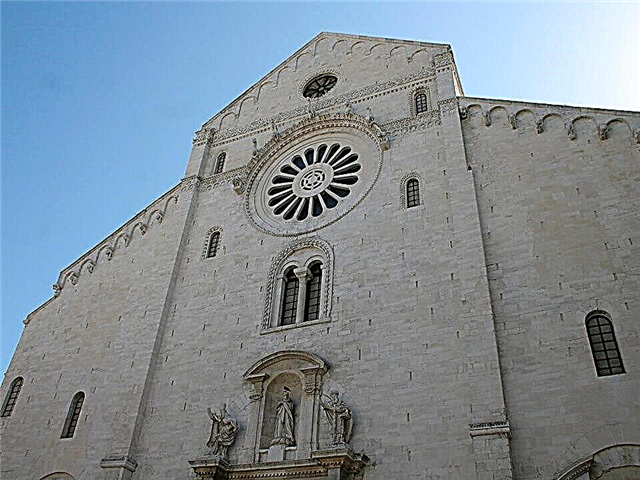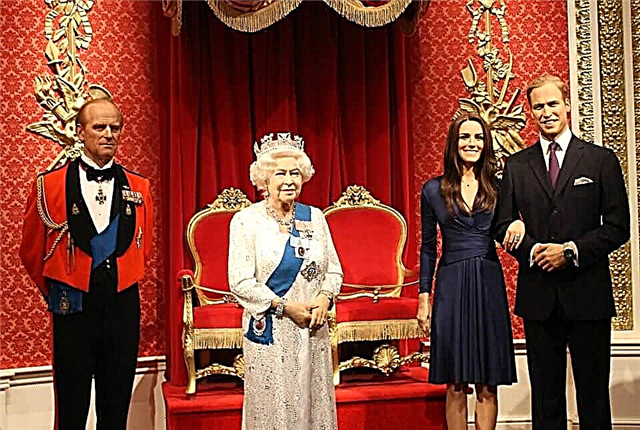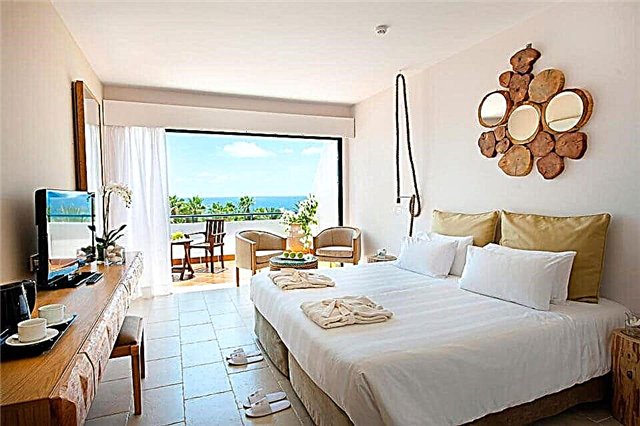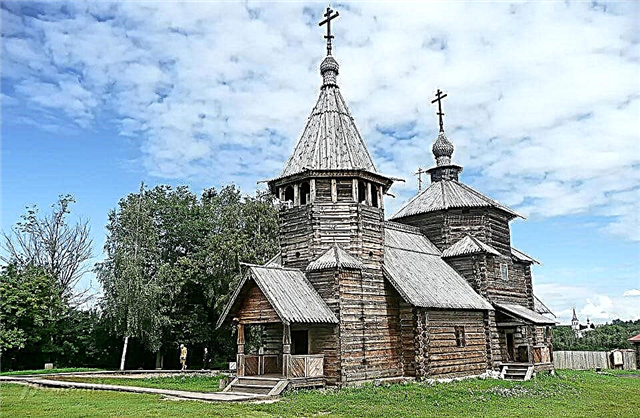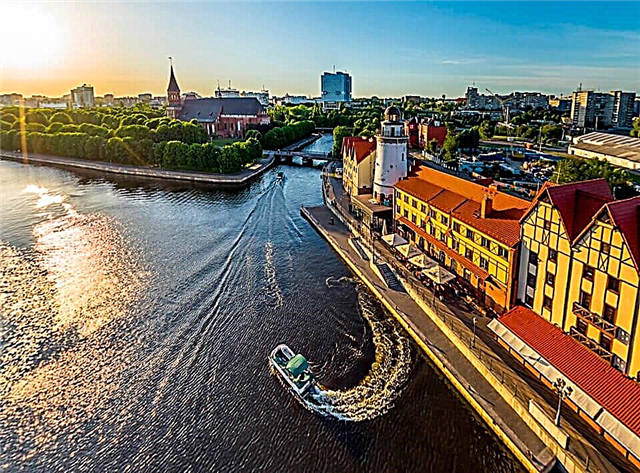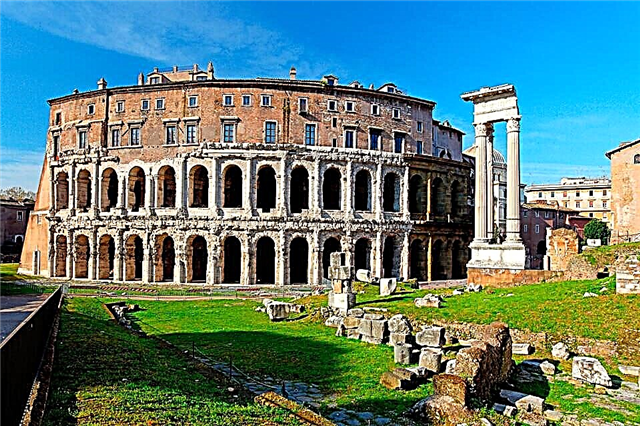Rome can be called a real cradle of history, culture, science and religion. The very core, where all these parallel ones suddenly intersect, mix and flash with bright lights. Its museum world had to be open - there was no other way, because this city itself is a museum - a huge open-air exhibition. Historical monuments of one era become a haven for representatives of other time periods, creating a very special atmosphere, seasoned with iconic names - Titian, Raphael and Leonardo da Vinci in love with flights - each of them was noted and wished to be marked by this particular Babylon of the new time. Here's a list of the best museums in Rome to visit first.
Vatican Museum Complex

The Vatican is a citadel, a stronghold of the Christian world and its main treasury, into whose dungeons so far few have looked. Too much time has passed, during which these very torture chambers managed to fill and overflow with the debris of past centuries, their iconic creations. Today, many artifacts are on display for public viewing and familiarization, having become the basis for expositions of more than twenty museums, the buildings of which also quite often become part of this endless exhibition. It is noteworthy that the modern Vatican exhibitions do not have a clearly religious character.
Of course, many of them are dedicated to the works of religious art, however, more than rich collections of paintings up to the nineteenth century clearly demonstrate a more than loyal attitude towards the gifts of secular culture. The territory of the Vatican complex is simply huge, so you should not count on a short walk somewhere between an afternoon nap and dinner. For a closer acquaintance with his collections, you will have to allocate at least three days. It is noteworthy that a visit to all the treasuries of the Vatican takes place with a single ticket, whose price is only sixteen euros.
The Sistine Chapel

The Sistine Chapel has always had a special place both in the general Vatican complex and in the life of the entire Catholic world, since it is in these halls filled with grandeur and brightness of colors that the election of a new Pope takes place through the holding of Conclaves. And in these cases, it was the Sistine Chapel that turned into something like a thin and ghostly, without exaggeration, bridge between the inhabitants of Rome and the decision of the cardinals - black smoke and advice continues, white smoke and let the whole world rejoice, because the new Pontiff has been elected!
The external decoration of the chapel looks rather modest, especially against the background of other buildings of both Rome and the Vatican itself, but in terms of its internal content with the Sistine Chapel it is unlikely to be able to compete with any of the monuments of Italy, even of the corresponding period, because it is here that the best Renaissance creations that revived these walls with the hands of Michelangelo, Botticelli, Pinturicchio.
Perhaps, an absolutely stunning impression on everyone entering under the painted vaults is made by a large-scale fresco designed to show the "Last Judgment" in all its horror and solemnity. It should be borne in mind that the Sistine Chapel is not completely independent. This is just a part of a rather extensive complex located in the Vatican, and therefore you do not need to buy a separate ticket to visit it. Tickets are purchased to visit the entire complex, and therefore you should not limit such a walk with your own hands, because, in addition to the chapel, you can visit other monuments of culture, religion, history, paying a total of only sixteen euros.
Vatican Library

The Vatina Apostolic Library is still considered the most mysterious treasury of knowledge extant today. This is mainly due to the fact that most of its rooms are closed to the public, and some of its rooms remain nothing more than a legend until proven otherwise. One way or another, but in the richly painted halls there are manuscripts that relate to almost all milestones in the development of mankind.
Of great interest among tourists, however, are not old books of past centuries, but an extensive collection of engravings, which is considered the richest of all collected in the entire world practice. And this is not surprising, because few of the ordinary guests of Rome, who want to get a little closer to the historical heart of this place, have the necessary level of training - most of the texts are written in a heavy syllable and in ancient languages.
But for scholars, professors and their students, visiting the Apostolic Library can be an ideal tool for writing research papers on a variety of topics. It is also worth noting the presence of another hall, which is also accessible to a wide range of people. We are talking about the so-called Aldobrandi wedding hall, which has a collection of unique frescoes that can amaze and captivate everyone. Since the Vatican Library is also part of its complex, the purchase of separate tickets to visit it is not required.
Raphael's Stanzas

Rafael Santi is a recognized genius of his time and a genius beyond time, as the premises of the Vatinsky Palace almost shout about, or rather, those four relatively small rooms that were painted either personally by Raphael, or after his death, but according to the master's surviving sketches.
The painting of Raphael's Stanzas looks like a small box with a skillful lock and a dozen secrets, since both on the rough masonry, and almost under the ceiling, and above the supporting supports, there are scenes into which great people of the past and contemporaries of the master, who amazed the world and amazed by the world before the very end. Of course, religious subjects also occupy a significant place in this painting, but there was also a place for philosophy, poetry, and justice.
At the same time, fulfilling his really deep plan, Raphael was only twenty-five years old, from this, even more admiration is caused by the fact that the talent of the then young master was noticed by the Pope himself and put on a special stage - the former frescoes were destroyed, despite the fact that they were also made by more than professional craftsmen. Since the Stanzas of Raphael are part of the Vatican Museum fund, there is no separate entrance fee to their premises. But the total admission fee is sixteen euros.
Colosseum, Roman Forum, Palatine Hill with one ticket - RUB 1,427
Time entrance to St. Peter's Basilica with audio guide - 1 405 ₽
Fast track entry to the Vatican Museums and the Sistine Chapel - RUB 2,018
Skip-the-line: museums, Sistine Chapel, St. Peter's Basilica - RUB 3 884
Hop-on hop-off sightseeing tour - RUB 1,441
Hop-on hop-off bus tour and free audio tour - from RUB 1,657
St. Peter's Basilica with ascent to the dome and a visit to the crypt - 3 531 ₽
Villa Borghese

Among the epicenters of both ancient and relatively modern, but still truly high cultural heritage, Villa Borghese stands out. The building of the eighteenth century contains numerous fragments of past greatness - Roman mosaics dating from the first centuries of our era, as well as works by Titian, Rubens, Bernini and other representatives of this wave, which are located directly in the Borghese gallery. The exposition of the National Etruscan Museum is now formed from mosaics, the entrance to which will cost six euros.
Formally located on the territory of the Villa Borghese, however, in fact, it is located in the Villa Giulia, which is open to the public from ten in the morning and with a short break until the beginning of five.A special feature is to separate the works of the Impressionists and adherents of the styles that replaced him - Monet, Degas, Cezanne and other sensational names - are collected in the premises of the National Gallery of Modern Art.
This gallery is open a little longer - until seven in the evening and has a lower ticket price - only four euros. But about the villa itself and other buildings related to it, as for the garden - the richest and largest landscape monument in Rome - numerous sculptures are hidden among the spreading branches, and right on the water - in the center of a small radiant lake - there is a truly unique temple where ancient water clock.
It is noteworthy that a walk to the very Villa Borgose can also be turned into a kind of excursion. As practice shows, the most colorful route starts from the well-known Spanish Steps of Rome and along the boulevard Trinita dei Monti. It is possible to enter the territory of the villa on all days except Monday, from nine in the morning to seven in the afternoon. The maximum entrance ticket price will be no more than nine euros, depending on the age of the visitor.
Capitoline Museums

The foundation of modern Capitoline museums was laid back in the fifteenth century by the pontiff himself, who brought Rome a really generous gift - bronze statues from Lateran. It is they who are today in Palazzo Nuovo, allowing their guests to admire the ideal forms of Cupid and Psyche, look into the faces of great philosophers, marvel at the nobility of the features of the former rulers of Rome. The main treasure of the Palazzo dei Conservatory, overshadowing both the works of Titian and Verenese, kept here, is the Colossus of Constantine, which has survived only in fragments, but continues to demonstrate the true grandeur of the seven wonders of the world.
Like the famous London gallery of modern art, the Central Montemartini Museum is located in the building of a former power station, but its collection consists mainly of classical art objects. All these buildings are located on Capitol Square, which itself is a monument of both history and culture. The Capitoline Museums are closed only on the most significant holidays, but even this does not save you from crowded queues that make it very difficult to visit even at the stage of buying tickets, whose prices reach a maximum of fifteen euros, so it is better to pre-order on the official website of the complex in advance.
Museum "Altar of Peace"

The museums that are so visited, the exposition of which consists of only one artifact, can be counted on one hand. So, in the modern Roman museum there is one single monument that perpetuates the greatness of the goddess of peace, which is subtly hinted at by its name, although the construction was timed to coincide with the return of one of the greatest men of his time, Emperor Augustus, from Spain. This was an initiative of the Senate, which is also somewhat out of the ordinary. Unfortunately, the authentic building, which was located on the banks of the Tiber, was severely "mutilated" during the barbarian invasion, and then completely washed away during the flood of the river.
Fragments of the "Altar of Peace" began to surface already in the sixteenth century, however, then they quickly sailed away to private collectors. The final restoration of the memorial took place four centuries later on the initiative of the main "fan" of the very emperor Augustus - Benito Mussolini. Today you can get there by metro (line A, station Flamino).
Ticket prices are stable at an average of ten euros, in addition, there is the possibility of using the services of an audio guide. It will cost another six euros. Like most institutions of a similar profile, the Museum "Altar of Peace" is closed on Mondays, on all other days it starts work at nine and ends at half past seven.
National Roman Museum

As you might expect, the collection of the National Roman Museum is really vast, and that's putting it mildly. Part of its exposition is located in four buildings, the rest is kept in numerous funds. It is noteworthy that the buildings themselves are also worthy of special mention, being a continuation of traditions dating back to the architecture of the Late Middle Ages and the Renaissance.
Palazzo Massimo with its collection of jewels and art objects of the most ancient period, Palazzo Altemps with one of the richest collections of antique sculpture in Italy, the Balbi crypt with its samples of frescoes and coins, which can be used to distinguish almost all stages of the development of Rome, and the Baths of Diocletian with an extensive repository of manuscripts and archaeological artifacts from the era of the Roman Empire - all of them form the basis of the National Roman Museum. Already almost traditionally Monday is a day off, and opening hours are limited to nine in the morning and half past seven in the evening. The ticket price is eight euros.
Temple of Vesta in Rome

The main artery of Rome in former times was the so-called Forum. It was here that the main public and religious buildings of the city were located, and therefore it is not surprising that it is here that fragments, unique in their beauty and historical value, and even integral religious buildings, are still found. The temple of Vesta, which was discovered by Rodolfo Lanziani, was precisely such an accidental, in fact, find.
Unfortunately, the temple did not retain its authentic appearance - only some fragments remained from the once powerful walls - a podium, a colonnade, some statues, as well as the remains of the house of the Vestals, which were supposed to support the Sacred Fire that eternally illuminated the vaults of the temple, as the embodiment of Vesta herself, whose images were banned. Since the temple of Vesta is only a part of a fairly large-scale complex of the Roman Forum, there is no separate fee for entry to its territory. A general ticket, whose price varies within twelve euros, will also allow you to visit the main symbol of Rome - the Colosseum - and other structures.
Coliseum

Openwork lace of arches, grandeur and majesty - this is what amazes tourists in the recognizable sights of Rome, its symbol. Conceived as an antique entertainment center, the Colosseum or the Flavian Amphitheater is located between the 3 hills of Tselievsky, Esquilinsky and Palatinsky, on the site of a covered artificial lake.
The amphitheater owes its official name to three generations of Flavians. The construction of the 3-tier structure was started by Emperor Vespasian in 72 AD. and continued by his son Titus. Titus's brother Domitian completed construction in 82 AD, when underground rooms were dug for spectacular battles. The more popular name for the amphitheater - the Colosseum - is associated with the word "colossus", "colossal". Some researchers associate it with the statue of Nero, which stood next to the amphitheater, others with the scale of the structure.

Be that as it may, the Colosseum is unique in everything. In addition to gladiatorial fights, fights with animals were organized in its arena and naval battles were reconstructed. Only in the days of its opening, about 10 thousand animals died in the arena, for the entire period of its existence this figure reaches 1 million animals and about half a million people.
Opening hours: 8.30 - 17.00, from April to August 8.30 - 19.00. Price: 12 €, discount - 7 €.
Castle Sant'Angelo

From the tomb to the fortress, from the castle to the prison, from the residence of the Pope to the museum - this is the history of this building. Its construction dates back to 135 AD. and the reign of Emperor Andrian, who planned to build a mausoleum for himself and his descendants. The construction served as a tomb until the middle of the 3rd century, when Emperor Aurelian appreciated the strategic importance of the fortress inside the Eternal City. The popes of Rome also counted on the strength of its walls, making the castle their residence.
Thanks to one of them, who saw an angel over the structure, who removed the sword, Andrian's mausoleum was named Sant'Angelo Castle and acquired a statue of an angel on the roof.Later, the pontiffs lived in the castle, who used its cellars as a prison, where Giordano Bruno, Galileo Galilei and Benvenuto Cellini were imprisoned. The modern castle is a 7-level building that includes 58 rooms. Among them are the armory, the treasury, the library, the rooms of Pius V, etc.
Opening hours: daily from 9.00 to 19.30.
Baths of Caracalla

Another proof of the greatness of the Roman Empire are the ruins of the Baths of Caracalla, which, even in their modern state, amaze the imagination. The construction of the thermal baths began on the initiative of the Emperor Caracalla in 212 and lasted for 5 years. During this time, between Aventine and Celius, near the Appian Way, an architectural complex appeared, occupying 11 hectares. Named after the emperor, the baths consisted of a huge main building surrounded by a park, sports grounds, an amphitheater and libraries. The Baths of Caracalla have combined everything you need for a good rest, becoming the most popular place.
However, due to the attack of the barbarians, already in 537 they were partially destroyed and ceased to exist. Now the baths are not only a historical monument, but also one of the most unusual stages for concerts, performances and theatrical performances.
Opening hours: September - March 9.00 - 17.00, April - August 9.00 - 19.00, short day: Monday 9.00 - 14.00.
Mausoleum of Augustus

Unlike the tomb of Emperor Andrian, the mausoleum of Augustus is closed to the public and is much worse preserved. In 28 BC. after returning from Alexandria, the future emperor Octavian Augustus decided to build a mausoleum on the Champ de Mars, where the ashes of his family and loved ones would be kept. The place was not chosen by chance, there were already crypts of many famous personalities. Resembling an Etruscan burial ground, the structure, whose diameter was 89 m, was 44 m above the ground. It was surrounded by a terrace with columns, and two obelisks and bronze slabs were installed at the central entrance, telling about the life of the owner.

However, the mausoleum remained intact until 410, when it was plundered. Until the Middle Ages, the structure stood abandoned, until the Colonna family made a fortress out of it. One of the next owners of the building was Pope Paul III, who, having partially restored it, turned it into a garden-labyrinth. Another metamorphosis awaited the former mausoleum in 1780, when it was turned into an amphitheater, on the arena of which bullfighting and theatrical performances were staged.
In the XIX century. it became a concert hall, over which a roof was erected. The tomb owes its original appearance to Mussolini, who ordered the demolition of all the outbuildings. The restoration work was not completed. In 2016, a project was approved for the allocation of 6 million euros for the restoration of the mausoleum.
Baths of Diocletian

The largest thermal complex in Rome was the Baths of Diocletian. The ruins that have survived to our time do not allow us to estimate its scale, since part of it is occupied by later buildings. Initially, it covered the area between 3 hills: Viminal, Quirinal and Esquiline - i.e. about 13 hectares. In 298, construction began according to a typical plan, i.e. all rooms were located symmetrically to the central axis. By 305, a huge complex had grown in the center of Rome, consisting of indoor and outdoor pools with different water temperatures, saunas, places for individual ablutions, meeting pavilions, libraries, and gymnasiums.
The landscaped area hid separate outbuildings, gazebos and fountains in the greenery of the trees. The baths existed until the 6th century. The once colossal complex gets its second life in the 16th century, when Michelangelo builds the basilica from the surviving part of the building. Since 1889, the baths of Diocletian have become part of the National Museum, they exhibit the richest collection of antique sculptures, weapons, household items, etc.
Working hours: Tuesday-Sunday from 9.00 to 19.45. Cost: 10 €, with a discount - 5 €.
Theater of Marcellus

It is difficult to recognize the prototype of the Colosseum at the bottom of a residential building on the Tiber embankment. Built in 12, the theater of Marcellus was the largest that existed in Rome. It was planned to be built by Julius Caesar, and the emperor Augustus embodied it. The unique structure was a semicircular 3-tiered structure, part of which has not survived.
The building has undergone reconstruction several times: in the 1st century. under Vespasian, in the III century. under Septimius Sever, and already in the IV century. it ceases to be used. It was saved from destruction by the transformation into a fortress. In the XVI century. the next transformation is a Renaissance estate, which has survived to this day.
The first floor can be viewed at any time by everyone, the upper floors are occupied by residential apartments.
Museum and Crypt of the Capuchins (Kostnitsa)

The Museum of the Capuchins is famous for its controversial attraction. Located in the basement under the church, it attracts pilgrims and tourists with the interior of the crypt or Ossuary. The crypt is a vaulted room located under the altar and choir, where the relics of saints or martyrs are buried or exhibited. Roman Ossuary - 6 rooms, the walls and vaults of which are decorated with bones and skulls of 4 thousand monks, whose remains were transferred from the old cemetery. Patterns, lamps, frames, alcoves - all made of bones.
Skeletons dressed in traditional Capuchin clothes are placed in the niches, and in one of the halls there are the children's remains of the Pope's niece, Princess Barberini. Visiting the exhibition, you can learn about the history of the order, see relics and archival documents.
Opening hours: daily from 9.00 to 19.00. Cost: 8.50 €, with a discount - 5 €.
MAXXI Art Museum

Unusual both externally and conceptually. The futuristic structure (the construction of which took about € 150 million) with unexpected installations accommodated not only the exposition, but also a research center, a library, an archive, an auditorium for seminars and trainings, a restaurant, a cafe and a bookstore. MAXXI is not a museum where everything is static, but rather an educational town, a space where a wide variety of projects are implemented.
Opening hours: Tuesday - Friday, Sunday - from 11.00 to 19.00, Saturday - from 11.00 to 22.00. Cost: 10 €, with a discount - 8 €. Under 14 years old, admission is free.
Villa Farnesina

This masterpiece of the Italian Renaissance was commissioned by a banker in the early 16th century. and was originally called Villa Chigi. It received its present name in 1577, when it was bought by Cardinal Farnese. And although after that it changed owners more than once (now it is the National Academy dei Lincei), in history it has remained the Villa Farnesina. Except unusual for the XVI century. The architecture of the building is distinguished by frescoes by Raphael, Michelangelo, Giulio Romano and il Sodoma, and fraudulent painting made by the architect Baldassare Peruzzi himself. It is they who come to admire the visitors of the Museum of Architecture and Art, which is located within its walls.
Opening hours: Monday - Saturday from 9.00 to 14.00. Price: 6 €, discount - 5 €, teenagers - 3 €. Children under 10 years old are free.
Crypt Balbi Museum

It is part of the National Museum - named after the Roman general Lucius Cornelius Balba. The Roman used the funds raised after a successful military campaign to build a theater and a crypt, which can be seen under a modern building. The exposition will tell about the development of Rome, it is represented by coins, fragments of dishes, tools, clothes. The 1st floor demonstrates changes in the architecture and life of Rome from the Middle Ages to the present day. The 2nd floor exhibition highlights the evolution of the city from ancient times to the Middle Ages. There is an exedra in the basement; descent here is possible only with a guided tour
Working hours: Tuesday-Sunday from 9.00 to 19.45. Cost: 10 €, with a discount - 5 €.
Barberini Palace

The Barberini Palace, according to the original plan, was supposed to repeat the Villa Farnesina, but the 3 architects who took part in its construction made it one of the best examples of the early Baroque. The palace, built for Cardinal Barberini, belonged to this family from the date of construction in 1634 until 1949, when due to the crisis the family was forced to sell it to the state.Now in the left wing of this building there are expositions of the National Gallery of Art, in which works of artists of the 16th-18th centuries, a collection of porcelain and furniture are exhibited. The right wing is occupied by the Officers' Assembly.
Opening hours: Tuesday-Sunday from 8.30 to 19.00. Price: 12 €, discount - 6 €.
Villa Giulia National Museum

From built in the 1550s. for Pope Julius III of the architectural complex, only the third part was preserved - the Villa Julia. It seemed that she was not destined to be holistic from the very beginning - by the end of the 16th century. one part of it was destroyed, and the other was rebuilt for another pope. Constructed as a papal residence, the building repeatedly changed its purpose: warehouses, then military barracks, then a hospital and a school, until in 1870 it became the property of the state. In 1889, the National Museum of Etruscan Art was opened in the villa.
Opening hours: Tuesday-Sunday from 9.00 to 19.30, days off: Monday, 1.01 and 25.12.
Museum Center Montemartini

It is unique both in its interior and because of its appearance. When restoration began in the Capitoline Museums, it was necessary to temporarily place exhibitions somewhere. It was then that they remembered the empty building of the former TPP named after Montemartini, recently renovated for various events. Sculptures, sarcophagi, bas-reliefs were placed against the backdrop of huge installations, boilers and other machines. The contrast between antiquity and modernity was so striking that at first it was decided to hold an exhibition and then open a museum in the building.
Working hours: Tuesday-Sunday from 9.00 to 19.00. Price: 11 €, discount - 10 €.

